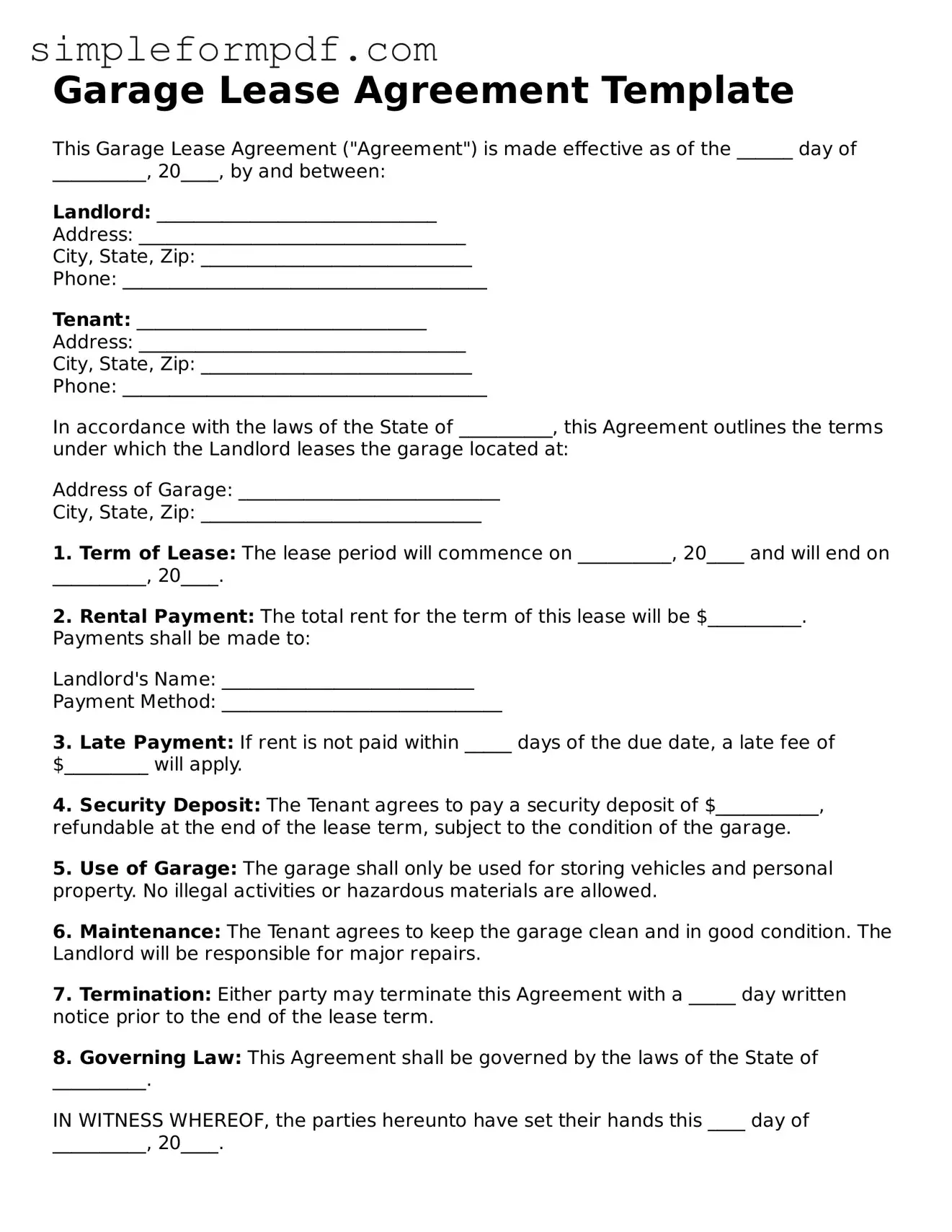Garage Lease Agreement Template
This Garage Lease Agreement ("Agreement") is made effective as of the ______ day of __________, 20____, by and between:
Landlord: ______________________________
Address: ___________________________________
City, State, Zip: _____________________________
Phone: _______________________________________
Tenant: _______________________________
Address: ___________________________________
City, State, Zip: _____________________________
Phone: _______________________________________
In accordance with the laws of the State of __________, this Agreement outlines the terms under which the Landlord leases the garage located at:
Address of Garage: ____________________________
City, State, Zip: ______________________________
1. Term of Lease: The lease period will commence on __________, 20____ and will end on __________, 20____.
2. Rental Payment: The total rent for the term of this lease will be $__________. Payments shall be made to:
Landlord's Name: ___________________________
Payment Method: ______________________________
3. Late Payment: If rent is not paid within _____ days of the due date, a late fee of $_________ will apply.
4. Security Deposit: The Tenant agrees to pay a security deposit of $___________, refundable at the end of the lease term, subject to the condition of the garage.
5. Use of Garage: The garage shall only be used for storing vehicles and personal property. No illegal activities or hazardous materials are allowed.
6. Maintenance: The Tenant agrees to keep the garage clean and in good condition. The Landlord will be responsible for major repairs.
7. Termination: Either party may terminate this Agreement with a _____ day written notice prior to the end of the lease term.
8. Governing Law: This Agreement shall be governed by the laws of the State of __________.
IN WITNESS WHEREOF, the parties hereunto have set their hands this ____ day of __________, 20____.
_____________________________
Landlord's Signature
_____________________________
Tenant's Signature
